Photo

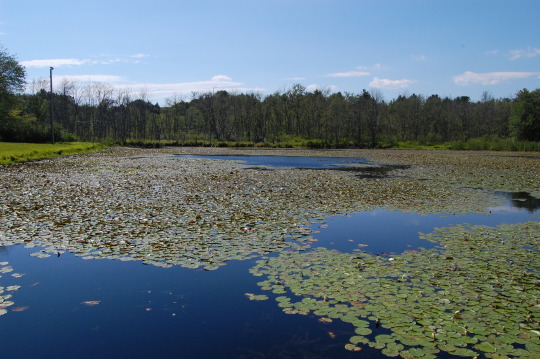
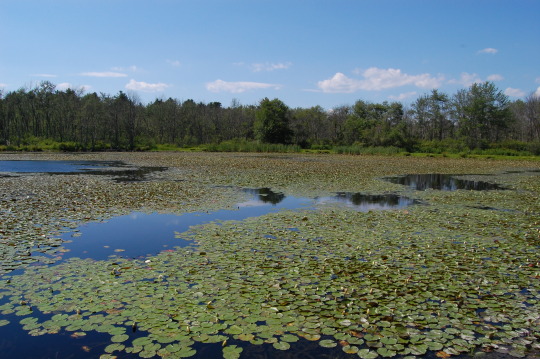
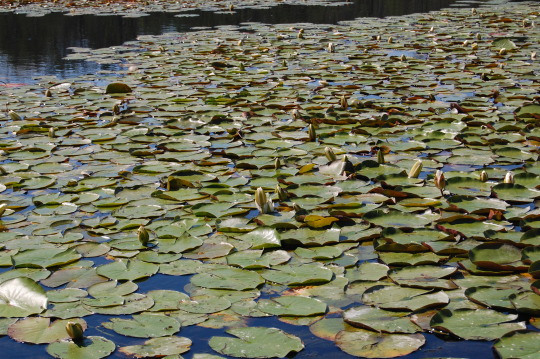
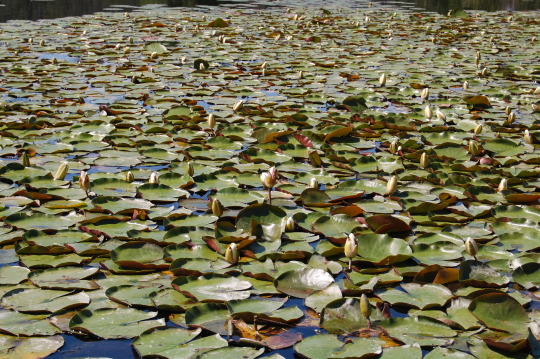
Trout Brook
Apparently, this used to be known as Tubwreck Brook, because one spring Captain James Tisdale attempted to sail down the stream in a tub. Yeah, I don't know why, either; the book doesn't really explain further. All I know is that the tub eventually capsized--as one might expect--and Tisdale's friends never let him forget his stupidity--as one might also expect. I can only assume the guy was drunk. At any rate, his friends threw a big party to celebrate his rescue from the wreck, all tongue-in-cheek, and apparently "an original poem telling this story was repeated for many years around Dover fireplaces." That is some dedicated ridicule.
6 notes
·
View notes
Photo

Dover Church
Built in 1839, this church contains a Paul Revere bell. Or at least it did in 1937.
6 notes
·
View notes
Photo
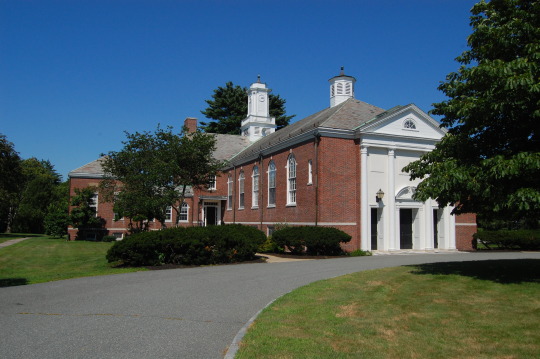
Town House
Here we are in Dover, altitude 156, population in 1937 of 1,305, settled in 1635, incorporated in 1784. The above is, we think, the Town House, "of brick topped by a graceful spire."
4 notes
·
View notes
Photo

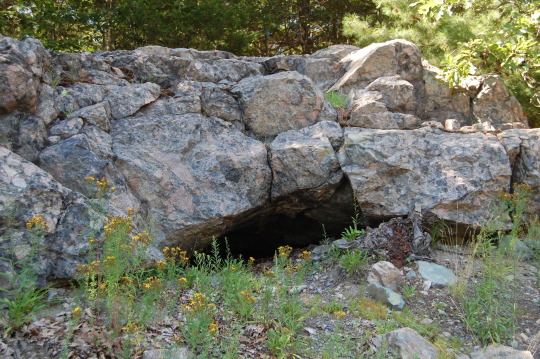
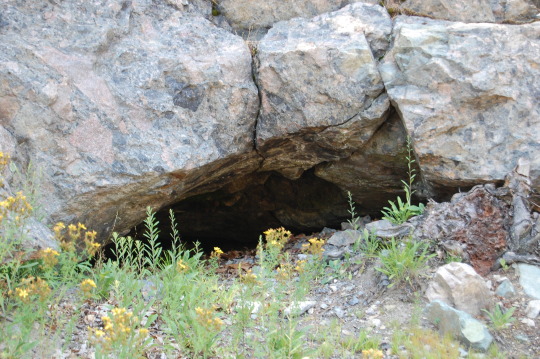
Oven's Mouth
Also known as Devil's Mouth, the book tells us this was used by Native Americans "as a bake oven and as an arsenal--presumably at different times." Oh, 1937 book author, you're hilarious!
4 notes
·
View notes
Photo

Baker Homestead
In 1928, this home was one of three to be awarded the Better Homes of America award "for excellence in design, equipment, construction, and grounds."
Fun story about this house: In 1798, 12-year-old Betsey Metcalf Baker became smitten with a bonnet that one of her friends had received from England. The intrepid young Betsey returned home to this house and invented "a method of splitting and braiding straw" so that she could make herself her own version of the coveted bonnet. Soon enough, she began making the bonnets for her friends, too. Betsey "considered it irreligious to patent her process," however, so she did not make any money off of her invention. She did, however, spur "the development of one of the leading industries in the East."
#baker homestead#state route 109#massachusetts#better homes of america#betsey metcalf baker#england#east#1937 book
4 notes
·
View notes
Photo
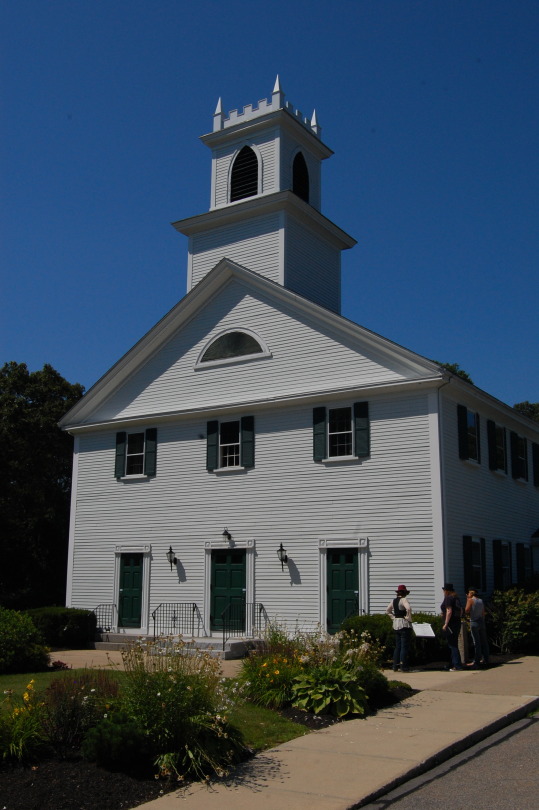
Clapboardtree Meeting House
Here we are in Westwood. Yes. We were giddy about that, too. Anyway, Westwood, altitude of 102, population in 1937 of 2,537. It was settled in 1640 and incorporated in 1897. The book tells us that it "has been occupied by those who loved the land," but that by 1937 agriculture had become "the hobby of retired business men."
This Clapboardtree Meeting House was supposed to have been on the town green. It's not, and we would never have found it without CHEATING. (The Internet was involved.) But, we did eventually find it, so here it is. Built in 1731, it was white with green blinds in 1937 as well. The 1937 book praises the building's "well-proportioned belfry."
6 notes
·
View notes
Photo

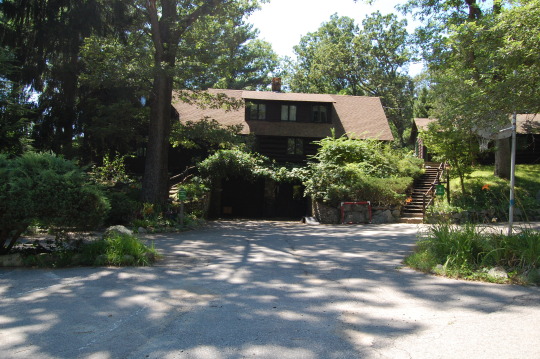
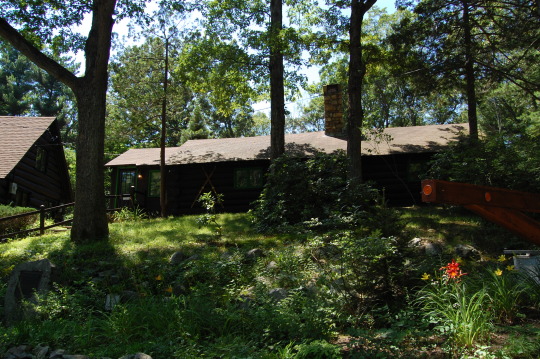

Scoutland, Inc.
It doesn't look as if this is still Scoutland, Inc., but the plaque helped to indicate to us that we were in the right place. According to the 1937 book, Scoutland, Inc. was a 1300-acre reservation, containing 41 cabins for Scouts to stay at (presumably Boy Scouts? The book doesn't say). Apparently, in 1937, the place attracted "Scouts" from all over the world. Just inside the entrance were supposed to be two log cabins, one for the rangers and one for the superintendent. I have provided above photos of the buildings just inside the entrance. They look newer than 1937 to me.
We were also supposed to be finding the Trading Post, "a two-story square tower of broad stone with a bell, resembling a California Mission," but we just could not find that anywhere, although we drove for the "short distance" that the 1937 book directed us to drive. The book warns us that "it is possible to drive through the reservation over a narrow rough road bordered by a second-growth forest; but the drive is for hardy souls only."
#scoutland inc.#trading post#state route 109#massachusetts#scouts#boy scouts#california mission#1937 book
3 notes
·
View notes
Photo
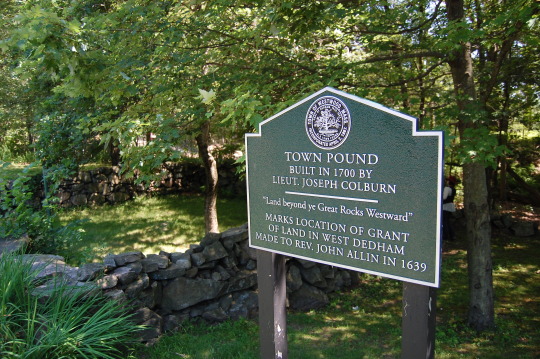

Town Pound
Like the helpful sign tells you--and the 1937 book agrees (which doesn't always happen on these tours--this was the "first grant of land in Westwood, made to the Rev. John Allen in 1639." I like the sign's quote about the "rocks westward," because I assume that's where Westwood got its name.
Anyway, the Town Pound was built in 1700 by Lieutenant Joseph Colburn. I don't really know what it was, honestly. The 1937 book tells us that "a low stone wall surrounds a gnarled oak, on the trunk of which is nailed the original sign, its wording almost obliterated." The oak tree must have died in between 1937 and today, because that tree surrounded by the low stone wall is clearly not very old (and the sign is obviously very new). But I appreciate Westwood's sense of history in replanting a tree and replacing the sign.
In 1937, there was still a "pound-keeper" in Westwood, "elected yearly, but his duties [were] those of a minister without portfolio."
#town pound#state route 109#massachusetts#westwood#reverend john allen#lieutenant joseph colburn#1937 book
1 note
·
View note
Photo

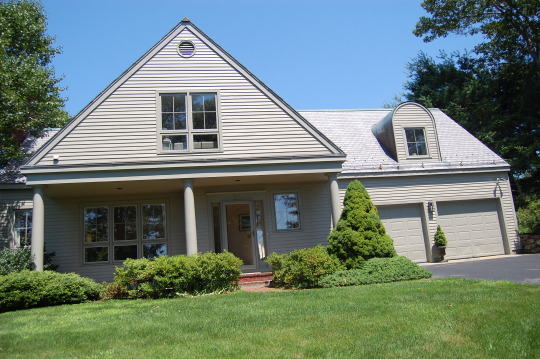
We were supposed to find Ottershaw Farm (which is pretty much the coolest name for a farm ever), which was formerly Dunroving (also a pretty cool name), which was the home of General Clarence R. Edwards of the 26th (Yankee) Division, whoever that was (the book doesn't say).
We couldn't find it, though, so instead we went to this open house. And it turned out the house belonged to a military man, so it was almost like it was the right place!
#state route 109#ottershaw farm#dunroving#massachisetts#general clarence r. edwards#26th (yankee) division
2 notes
·
View notes
Photo
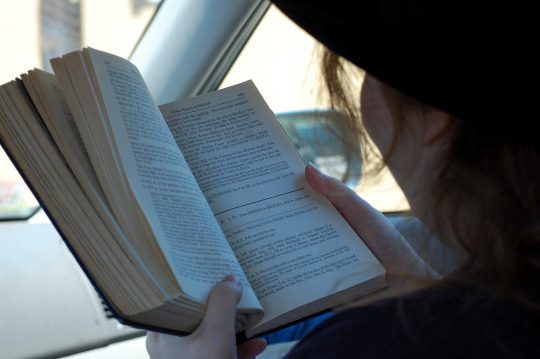

Beginning the tour at the beginning of the tour: in Boston.
5 notes
·
View notes
Text
State Route 109
Oops! I prepped you for the Concord tour and then, as it turns out, I don't actually have the photos from the Concord tour on this computer. So we are shifting focus to State Route 109, which is 20.5 miles running from Boston to Milford, with stops in Dedham, Westwood (yes, that's why we chose this tour), Dover, Medfield, Millis, and Medway.
Sorry about the confusion!
Just so you know, the 1937 book assures us that State Route 109 is a "hard-surfaced road" that is "passable all year." It "passes through several pleasant residential villages in a semi-agricultural area, with dense woodlands at frequent intervals,...crosses the Charles River, and passes through a countryside of neat homes and well-kept estates."
It's hard to know precisely where the 1937 book's measurements start, so these "High Roads and Low Roads" tours (as the book calls them) are always a bit of a challenge. We did this one for a friend's birthday, and her boyfriend tagged along. This was his first motor tour, and he KEPT CHEATING. So you may notice we have more success on this motor tour than we normally do. That's because he kept cheating and looking things up on Google.
Also, we all wore fancy hats for this motor tour. Just thought you'd want to know.
#state route 109#massachusetts#concord#boston#milford#dedham#westwood#dover#medfield#millis#medway#charles river#1937 book
5 notes
·
View notes
Text
Concord, in 1937
Settled in 1635, with an altitude of 135, Concord was home to 7,723 people in 1937.
Along with Lexington, Concord was the birthplace of the American Revolution. The 1937 book then says "it was a haven for poets, authors, naturalists, and philosopher" during the "Golden Age" of American literature. This involved Emerson and Thoreau. I hate Emerson and Thoreau. I was tricked into this motor tour!
The town never really had any industry, so according to the 1937 book it's pretty much the same as it was in colonial days. The business district rings the Green (and still does today), and fancy houses stand along the Concord River (also still true). Nathaniel Hawthorne (&another one of my favorite authors& - I have terrible taste in American literature according to the 1937 book) once said that "he lived beside [the river] for weeks before discovering which way it flowers," so sluggish is the river's current. The book praises the Concord houses for "beautifully proportioned doorways and panelled interiors that are a heritage of eighteenth-century craftsmanship," and explains that beyond the cluster of the town are farms.
In 1635, five years after the settling of Boston, a fur trader named Simon Willard and the Reverend Peter Bulkeley (I choose to believe they were lovers, that's just how I roll) led about a dozen families to the site of Concord, which at the time was a Native American village called Musketaquid. The knot of Boston settlers bought six square miles of land from the Native Americans for the price of garments, hatchets, knives, and cloth. They sealed the deal "by smoking the pipe of peace with the Indian chieftains." The town was named Concord to commemorate this deal, and the 1937 book tells me that the Concord townspeople and the Native Americans were BFFs ever after.
The first few winters in Concord were hard, but the settlement continued to slowly grow. By the end of the seventeenth century, it was a county seat. By August 1774, it was an important enough town that the first county convention to protest Parliament met there, followed by the First Provincial Congress in August and the Second Provincial Congress starting in March 1775 (this Congress adjourned when the Revolution broke out down the street). Because of its status as a Congressional seat, military stores were kept in Concord, which was why it was the focal point of the British attack in April 1775. On April 19, 1775, Dr. Samuel Prescott and William Dawes arrived in Concord with the message that the British were coming (Paul Revere was captured before he could get there). Concord Minutemen met the British forces at Old North Bridge, where shots were exchanged, marking the formal beginning of the American Revolution.
A siege of Boston followed, which caused so many Bostonians to flee to Concord that they actually called Boston town meetings there. Harvard held its classes in Concord while its campus was being used as barracks for the American army. Later, Concord was the seat of Shays's Rebellion.
After the Revolution, culture blossomed in Concord. Ralph Waldo Emerson wrote lots of stuff in Concord and revived Transcendentalism (a movement with an unnecessarily long name). In case you want to know who else belong to the T. group: Nathaniel Hawthorne, Franklin B. Sanborn, William Ellery Channing, Margeret Fuller, and Elizabeth Peabody. And Henry David Thoreau, Emerson's "intimate friend" wrote "Walden" on the shores of Walden Pond. Finally, Amos Bronson Alcott opened his School of Philosophy in a building known as Hillside Chapel. This left "his more practical wife and daughters [to] wrestle...with the humdrum problem of making ends meet." Mr. Alcott's daughter Louisa May wrote to help supplement the income (including "Little Women"). Other Concord authors: Margaret Sidney (Mrs. Harriet Mulford Stone Lothrop) and Jane Austin (not to be confused with Jane Austen; Jane Austin wrote "Nameless Nobleman." In case you know that book).
The inhabitants of Concord weren't just writers; they were also scientists. Harrison Gray Dyer erected the first telegraph line in the country, and William Monroe made the country's first lead pencils. In 1853, Ephraim Bull bred the Concord grape, which spurred the commercial production of "table grapes" in America.
In 1937, the book called Concord "a flourishing modern village." It was apparently a "trading center for farm and garden products," and also had ten small factories and a busy tourist trade. It was also developing a reputation as being an easy place to commute to Boston from, provoking several Boston families to move out of the city to establish homes there.
#concord#massachusetts#lexington#american revolution#golden age#america#emerson#thoreau#concord green#concord river#nathaniel hawthorne#american literature#boston#simon willard#reverend peter bulkeley#native americans#musketaquid#parliament#first provincial congress#second provincial congress#dr. samuel prescott#william dawes#paul revere#great britain#minutemen#old north bridge#harvard#shays's rebellion#ralph waldo emerson#transcendetalism
4 notes
·
View notes
Note
I see your posts in the Wellesley tag, and I'm wondring what you are doing exactly? Thanks!
I have a guidebook for Massachusetts that was published in 1937. The book contains a bunch of "foot tours" and "motor tours" of various places in Massachusetts. I follow the directions of these tours in the current day to see how much things have changed--or not changed--since 1937. You are seeing the Wellesley motor tour at the moment. :-)
2 notes
·
View notes
Photo
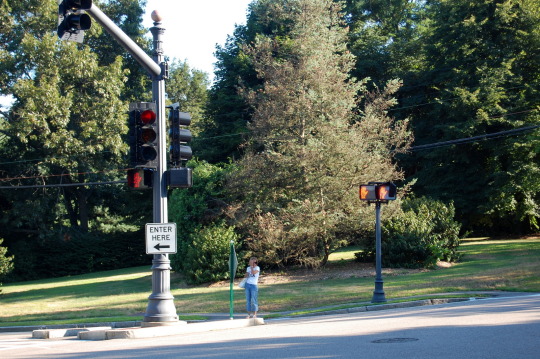
Oh, and you could, if you like, imagine that one of these trees is the Wellesley Buttonwood Tree.
History's Mysteries: Solved!
2 notes
·
View notes
Photo

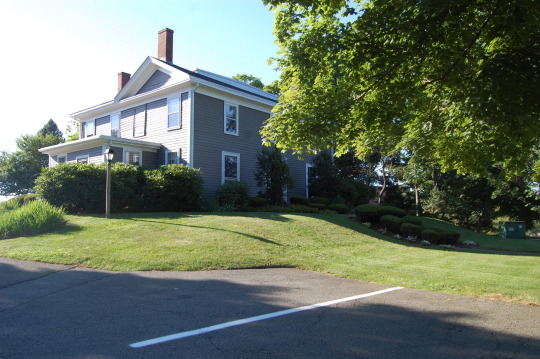
Slack House
This two-story house was built sometime before 1775. Benjamin Slack of Roxbury used it "as a place of refuge" for his family. I guess a place of refuge during the Revolution? The 1937 book doesn't bother to specify. Again, the interior of the house apparently retained much of its original character in 1937.
1 note
·
View note
Photo
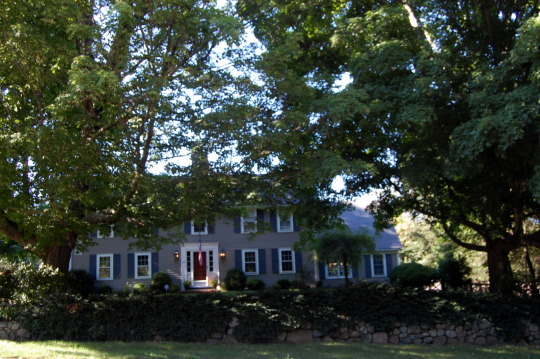
Ware House
A two-story structure. "Extensively remodeled." We think this is it. The book doesn't really tell us anything about it, except that it was built in 1720 and apparently still had, in 1937, a bunch of the original woodwork inside.
Sometimes I think the 1937 book author just tells us about the houses that are owned by friends of his.
3 notes
·
View notes
Photo
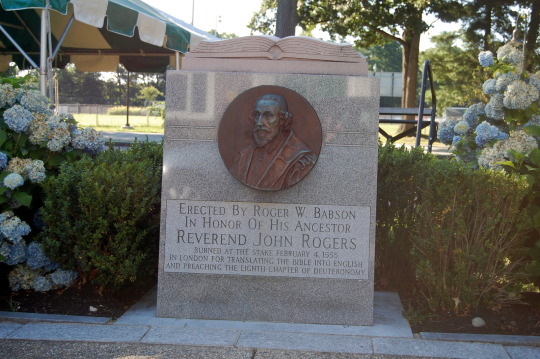
The founder of Babson actually had a pretty interesting relative. The 1937 book doesn't mention him but here, have some info about him anyway.
3 notes
·
View notes